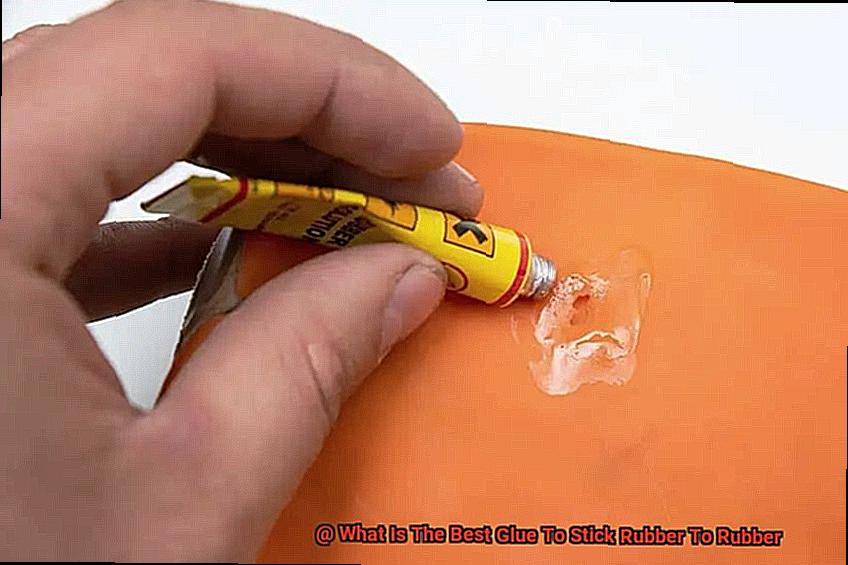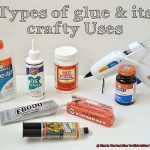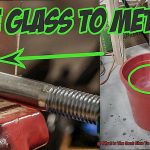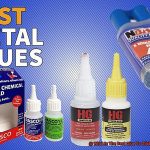Today, we’re delving into the world of adhesives to tackle a common dilemma – what’s the best glue for sticking rubber to rubber? Whether you’re crafting, fixing things up, or even conjuring something entirely new, finding the perfect adhesive can make all the difference.
Rubber is renowned for its flexibility and resilience, but when it comes to bonding rubber to rubber, not just any old glue will cut it. You need a trustworthy adhesive that delivers a robust and enduring bond.
In this article, we’ll explore some top contenders, meticulously examining their strengths and weaknesses. So if you’re tired of sticky situations and wasted effort, come along as we unveil the crème de la crème of glues that will stick rubber to rubber like nobody’s business.
Prepare yourself for an enlightening journey into seamless bonding.
What is Rubber?
Contents
Rubber, what a remarkable substance you are. Derived from the sap of certain plants or produced synthetically, rubber is a versatile material known for its elasticity, durability, and resistance to water and chemicals. Let’s dive deeper into the world of rubber and explore its fascinating properties.
Natural rubber, obtained from the latex sap of rubber trees primarily found in Southeast Asia, has a long and storied history. Harvesting this liquid gold involves making incisions in the tree’s bark, allowing the milky fluid to flow into collection cups. From ancient civilizations like the Mayans, who used it to create ceremonial game balls, to the commercial production boom in the 19th century, natural rubber has been an essential material for centuries.
The development of synthetic rubber brought new possibilities and advantages. By polymerizing various petrochemicals through chemical reactions, scientists created rubber with improved consistency and performance. Synthetic rubber offered increased resistance to aging and degradation, making it an attractive alternative to natural rubber in many applications.
What makes rubber so widely used is its unique set of properties. Elasticity is one of its most remarkable features. Rubber can stretch and return to its original shape without permanent deformation, making it ideal for products like tires, gaskets, seals, and countless other items that require flexibility and resilience.
In addition to elasticity, rubber boasts excellent resistance to water and numerous chemicals. This property makes it a top choice for applications where exposure to moisture or corrosive substances is expected. Furthermore, rubber’s good insulating properties make it invaluable for electrical insulation purposes.
The molecular structure of rubber is crucial to its remarkable properties. It consists of long chains of polymers that are intricately entangled with each other. This unique structure allows rubber to stretch when stress is applied and then return to its original state due to intermolecular forces. The chains can slide past each other during stretching but remain bonded together, giving rubber its elastic nature.
Factors to Consider When Choosing a Glue for Rubber-to-Rubber Bonding
When choosing a glue for rubber-to-rubber bonding, several factors should be considered to ensure a strong and durable bond. These factors include the type of rubber being bonded, the required bond strength, flexibility, chemical resistance, cure time, application method, and temperature resistance.
- Type of Rubber: Different types of rubber have varying properties, such as flexibility and chemical resistance. It is important to choose a glue that is compatible with the specific type of rubber being used.
- Bond Strength: Consider the strength of the bond required. Heavy-duty applications or objects subjected to high stress or movement may require a more powerful adhesive, while less powerful adhesives may suffice for weaker bonds.
- Flexibility: Rubber is known for its flexibility and ability to stretch. Choose a glue that can maintain the flexibility and elasticity of the rubber. Some glues may become brittle or rigid over time, leading to bond failure when subjected to stretching or flexing.
- Chemical Resistance: If the bonded rubber will come into contact with chemicals, oils, solvents, or other substances, choose a glue with good chemical resistance. Ensure that the chosen glue can withstand exposure to specific chemicals without weakening or breaking down.
- Cure Time: Consider the time it takes for the glue to fully cure and develop maximum strength. If quick bonding is necessary, look for fast-curing adhesives that provide a strong bond within a short period of time. However, be aware that faster curing times may compromise bond strength.
- Application Method: Choose a glue that suits the specific requirements of the project and aligns with your preferred application method. Some glues come in convenient forms like tubes or pens, allowing for precise application and easy handling, while others require mixing or special equipment.
- Temperature Resistance: Take into account the temperature range the bonded rubber will be exposed to. Some glues may lose strength or effectiveness at high or low temperatures. For extreme temperature conditions, choose glues with good temperature resistance for a durable bond.

Cyanoacrylate (Super Glue)
In the vast world of adhesives, one glue reigns supreme when it comes to bonding rubber to rubber: cyanoacrylate, better known as Super Glue. This mighty adhesive has become a staple for DIY enthusiasts and professionals alike, thanks to its remarkable bonding capabilities and versatile applications. Today, we will delve into the advantages and considerations of using cyanoacrylate for rubber-to-rubber bonding. So, grab your safety goggles and prepare to be amazed.
Advantages:
Lightning-Fast Bonding:
Cyanoacrylate sets the bar high with its quick setting time. While other glues may require hours to cure, cyanoacrylate forms an unbreakable bond within seconds. It’s the perfect solution for urgent projects that demand immediate adhesion, such as repairing rubber parts or joining rubber components.
Unyielding Strength:
When it comes to holding things together, cyanoacrylate means business. It boasts exceptional tensile strength, allowing it to withstand pulling forces without breaking or detaching the bonded rubber pieces. Whether you’re working with heavy machinery or tinkering with your car’s rubber components, cyanoacrylate has got your back.
Waterproof and Chemical Resistant:
No one wants a feeble bond that crumbles at the first sign of moisture or chemicals. Thankfully, cyanoacrylate forms a waterproof seal once cured, making it impervious to water or other liquids that may come into contact with your bonded rubber surfaces. Additionally, this adhesive demonstrates resistance to oils, solvents, and numerous substances commonly found in industrial environments.
Considerations:
The Right Rubber:
While cyanoacrylate works wonders with most rubber types, certain rubbers like silicone or fluorosilicone can pose a challenge due to their low surface energy. In such cases, it is recommended to use a primer specifically designed for these rubbers before applying the cyanoacrylate adhesive. This additional step ensures optimal bonding strength and durability.
Surface Preparation:
As the saying goes, “cleanliness is next to godliness,” and the same holds true for bonding rubber with cyanoacrylate. Properly preparing the surfaces is crucial for achieving the best results. Ensure that the rubber surfaces are clean, free from dirt, dust, or grease that could hinder the bonding process. Lightly sanding or cleaning them with an appropriate solvent can help create an ideal adhesive-friendly surface.
Contact Cement and Neoprene-Based Adhesives
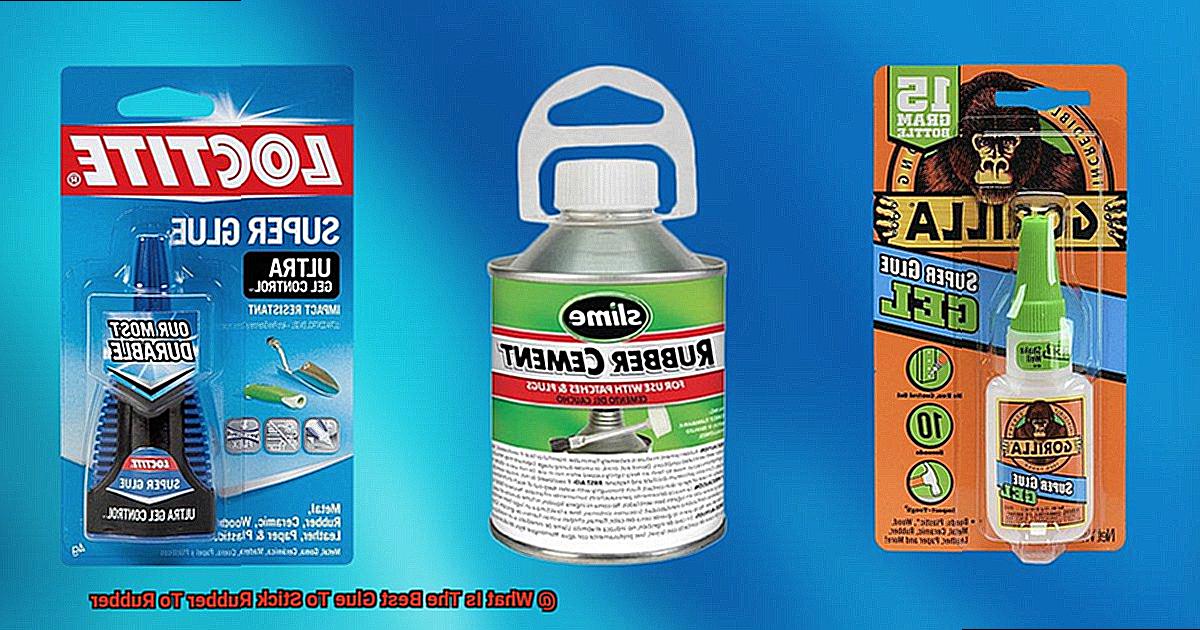
Contact cement and neoprene-based adhesives are two popular options for bonding rubber to rubber. While both are effective, there are some key differences between the two.
Bonding Mechanism:
- Contact cement creates a bond through contact. Both surfaces need to be coated with the adhesive and then pressed together for a secure attachment.
- Neoprene-based adhesives are specifically formulated for bonding rubber materials together.
Durability and Resistance:
- Contact cement is known for its strength and durability. It can withstand heat and moisture, making it ideal for applications where longevity is important. It can also bond other materials like leather, wood, and metal.
- Neoprene-based adhesives contain neoprene, a synthetic rubber that offers excellent flexibility and resistance to high temperatures. They are commonly used in industries like automotive manufacturing and construction.
Flexibility:
- Neoprene-based adhesives provide a flexible bond, which is crucial for rubber materials that require movement or stress resistance.
- Contact cement may not offer as much flexibility as neoprene-based adhesives.
Resistance to Environmental Factors:
- Neoprene-based adhesives are resistant to oil, water, and chemicals, making them suitable for outdoor or industrial settings.
- Contact cement is also resistant to heat and moisture, but may not have the same level of chemical resistance as neoprene-based adhesives.
In terms of applications, contact cement can be used in various industries and for different materials, including rubber. It is ideal for projects that require a strong and long-lasting bond. Neoprene-based adhesives, on the other hand, are specifically designed for rubber bonding.
To ensure a successful bond, it is important to properly prepare the surfaces by cleaning them thoroughly and roughening them slightly with sandpaper.
Epoxy Adhesives
Get ready to explore the extraordinary world of epoxy adhesives, the superheroes of the glue universe. With their unmatched strength, durability, and versatility, epoxy adhesives have rightfully claimed their position as the ultimate choice for bonding rubber surfaces. Strap on your cape and prepare for an adventure like no other.
Chapter 1: The Dynamic Duo – Resin and Hardener
Epoxy adhesives are an unstoppable duo composed of two essential components: resin and hardener. Just like Batman and Robin, these components work in perfect harmony to create a bond of unrivaled power. Properly mixing them is crucial to unleash their full potential.
Chapter 2: The Power of Versatility
One of the remarkable advantages of epoxy adhesives is their ability to bond a wide range of materials, including rubber. Fearlessly conquering diverse environmental conditions such as heat, cold, and moisture, these adhesives remain unyielding. They withstand exposure to chemicals, making them ideal for applications where solvents or oils are present.
Chapter 3: Preparing for Battle – Surface Preparation
Before our heroes can save the day, proper surface preparation is paramount. Wiping the rubber surfaces with a suitable solvent or cleaning agent ensures they are free from contaminants. But that’s not all. To maximize adhesion, gently roughen the surfaces using sandpaper or another abrasive material. This creates a larger surface area for our adhesive heroes to work their magic.
Chapter 4: Unleashing the Power – Application Techniques
Now it’s time to witness the transformative powers of epoxy adhesive. Mix the resin and hardener following the manufacturer’s instructions – precision is key. Apply a thin layer of the mixed adhesive onto one rubber surface using a brush or applicator. Then, firmly press the two rubber surfaces together and hold them in place for the recommended curing time. This is when our heroes truly shine, as the adhesive reaches its maximum strength.
Chapter 5: The Waiting Game – Curing Time
Patience, dear readers, is a virtue. Epoxy adhesives require sufficient curing time to reach their full potential. Before subjecting the bonded rubber parts to any stress or load, allow them ample time to cure. This ensures a strong and durable bond between the rubber surfaces.
Conclusion: The Unbreakable Bond
In conclusion, epoxy adhesives are the epitome of strength and durability when it comes to bonding rubber surfaces. With their exceptional bonding properties and resistance to environmental factors and chemicals, they are true superheroes in the world of adhesives. By following proper surface preparation and application techniques, you can achieve an unbreakable bond between rubber surfaces using epoxy adhesives.
Specialized Rubber Adhesives
Rubber is a unique material, known for its low surface energy and flexibility, which can make it a challenge to bond. Fortunately, there are specialized rubber adhesives that are specifically formulated to overcome these challenges and create strong and reliable bonds.
One type of specialized rubber adhesive is the contact adhesive. These adhesives are renowned for their ability to instantly create strong and flexible bonds between rubber surfaces. The process is simple: a thin layer of adhesive is applied to both surfaces, allowed to dry until it becomes tacky, and then the surfaces are pressed together. Contact adhesives are commonly used in industries such as shoe manufacturing, automotive, and construction.
Another popular option for bonding rubber is cyanoacrylate adhesives, also known as super glue. These fast-acting adhesives bond quickly and firmly to rubber surfaces by initiating a chemical reaction when exposed to moisture. The reaction causes them to polymerize, creating a strong bond. Super glue is commonly used for repairing rubber soles on shoes or bonding small rubber components.
Rubber cement is another widely used adhesive for bonding rubber surfaces. It is a liquid adhesive that is applied to the surfaces being bonded, and over time it dries to create a flexible and durable bond. What sets rubber cement apart is its ability to bond different types of rubber together, making it a versatile option for various applications.
In addition to these general types of specialized rubber adhesives, there are also adhesives designed specifically for certain industries or applications. For instance, automotive adhesives are formulated with enhanced resistance to temperature, oil, and other harsh conditions commonly found in vehicles. These adhesives are ideal for bonding rubber seals or gaskets in automotive applications.
When choosing a specialized rubber adhesive, factors such as application method, size of the bonding area, and specific project requirements should be considered. It is crucial to follow the manufacturer’s instructions for proper application and curing time to ensure a strong and long-lasting bond.
Preparing the Surfaces Before Applying Adhesive
Today, we embark on a journey into the realm of rubber-to-rubber bonding and the essential art of surface preparation before applying adhesive. This step is nothing short of vital in achieving a bond that is both robust and long-lasting. So, sit back and get ready to explore.
To begin, our first mission is to cleanse those rubber surfaces. We must rid them of any dirt, dust, or grease that could potentially sabotage the bonding process. Armed with a mild detergent and water solution, scrub those surfaces until they sparkle. Once cleansed, thorough rinsing is a must, followed by ensuring they are bone dry before moving forward. Remember, different rubber materials may require specific cleaning agents or methods, so consulting the manufacturer’s instructions or seeking professional guidance is highly recommended.
But wait, there’s more. Let us not forget the crucial task of roughening the surfaces. This step serves as an invitation for the adhesive to firmly grip onto the rubber. Equip yourself with sandpaper or a trusty sanding block and gently abrade the surfaces. Our goal here is not to strip away layers of rubber but rather to create a subtly rough texture that offers an extra dose of adhesion. It is crucial to ensure that the surfaces are evenly roughened and devoid of any loose particles before proceeding.
Now, brace yourself for the intriguing part. Consider employing a primer or bonding agent specifically tailored for rubber-to-rubber bonding. These magical concoctions forge a chemical bond between the adhesive and the rubber surfaces, elevating their union to new heights. Follow the manufacturer’s instructions diligently and allow ample time for the primer to dry before applying the adhesive.
Before we conclude our journey, there is one more foe we must conquer: moisture. Alas, moisture is not our friend when it comes to bonding. Therefore, it is imperative to double-check that those surfaces are completely devoid of any hint of dampness before introducing the adhesive. Moisture has a knack for meddling with the bonding process and compromising the overall strength of our bond. And that is something we simply cannot allow.
Also Read: How to Glue Neoprene to Rubber?
Conclusion
In conclusion, there are several adhesive options available for bonding rubber to rubber that can get the job done right. One popular choice is Cyanoacrylate, commonly known as Super Glue. Its quick setting time, unyielding strength, and resistance to water and chemicals make it a top contender. However, some rubber types may require the use of a primer with this adhesive.
If you’re looking for strength and durability, contact cement is a reliable option. This adhesive creates a bond through contact and is known for its ability to withstand tough conditions. On the other hand, neoprene-based adhesives offer flexibility and resistance to high temperatures. They are perfect for rubber materials that need to handle movement or stress.
For unmatched strength, durability, and versatility, epoxy adhesives are an excellent choice when bonding rubber surfaces. These adhesives can handle exposure to environmental factors and chemicals without breaking a sweat. Plus, they can bond various materials alongside rubber.
Specialized rubber adhesives have also been formulated specifically for overcoming the challenges of bonding rubber surfaces. Contact adhesive, cyanoacrylate adhesive (super glue), and rubber cement fall into this category. Each type has its own set of advantages and considerations depending on your specific application.
No matter which adhesive you choose, proper surface preparation is crucial for achieving a strong and long-lasting bond between rubber surfaces. This includes thorough cleaning of the surfaces, slight roughening with sandpaper if needed, using a primer when necessary, and ensuring complete dryness before applying the adhesive.
To ensure success in your bonding project, consider factors such as the type of rubber being bonded, required bond strength, flexibility needs, chemical resistance requirements,cure time preferences,application method suitability,and temperature resistance capabilities when selecting an adhesive.

